Monsters fascinate. There’s something in the shadows that you don’t understand, can’t quite make out the shape of—something that can eat you. Something that can steal your children, spoil your crops, or worst of all turn you into a monster yourself, so that you’ll no longer be welcome in the warm places where we tell stories about monsters.
That warm place started as a small campfire in the dark night, surrounded by very real predators. Beside that fire, you could lay down your spear and basket and feel almost safe for the night. We keep fearing monsters even as the shadows retreat and the campfires grow, even now when light pollution banishes them to the few remaining dark corners, where they must surely shiver and tell stories about our advance.
Mustn’t they?
It’s become increasingly obvious that humans are terrifying. Not only in the “we have met the enemy and he is us” sense, but in the sense that we can eat everything, steal offspring, spoil crops, and reshape the world into our image. I had this in mind as I wrote Winter Tide—the most sympathetic species can be terrifying if you catch their attention, and the people who terrify you may huddle around their own campfire.
Sometimes I want to hide in the shadows near that campfire, and listen to the stories.
Frankenstein, by Mary Shelley
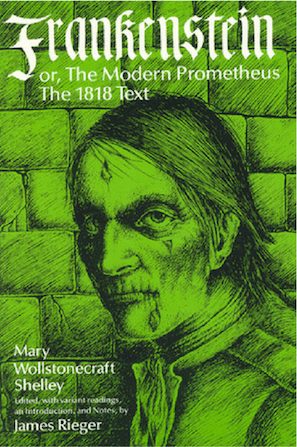 Shelley’s masterpiece is as famous as a book can get, and as misunderstood as its non-titular main character. Thinkpieces invoke it as a warning against scientific hubris. In fact, it’s a fable about the importance of good parenting: Dr. Frankenstein brings his revenant into the world, and promptly abandons him in a fit of revulsion. That leaves the unnamed monster to wax philosophical, teach himself to read, and make tentative forays into joining human society. Unfortunately for him, humans tend to run screaming at the sight of sewn-together corpse quilts. Or sometimes they just attack. Eventually, he decides we’re not worth having around.
Shelley’s masterpiece is as famous as a book can get, and as misunderstood as its non-titular main character. Thinkpieces invoke it as a warning against scientific hubris. In fact, it’s a fable about the importance of good parenting: Dr. Frankenstein brings his revenant into the world, and promptly abandons him in a fit of revulsion. That leaves the unnamed monster to wax philosophical, teach himself to read, and make tentative forays into joining human society. Unfortunately for him, humans tend to run screaming at the sight of sewn-together corpse quilts. Or sometimes they just attack. Eventually, he decides we’re not worth having around.
If at any point in the book, Dr. Frankenstein could have gotten his act together enough to love his kid, this would be one of those stories about an ugly duckling finding his place. Instead it’s a perfect tragedy about how monsters are born not out of the inherent hubris of their creation, but out of our own fears.
Tooth and Claw, by Jo Walton
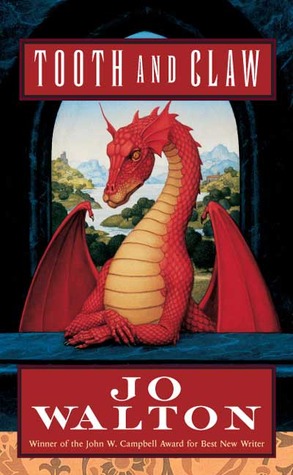 Tooth and Claw is a Victorian novel of manners. It starts with a fight over inheritance, and concerns itself with forbidden romance and ambitious merchants and social welfare movements. Oh, yes, and all the characters are cannibalistic dragons. The inheritance fight is over who gets to eat which parts of the family’s deceased patriarch, thereby gaining the magical power and strength of his flesh. The social welfare movement may be radical, but would certainly never forbid the rich feeding their offspring a nutritious diet of “excess” poor children.
Tooth and Claw is a Victorian novel of manners. It starts with a fight over inheritance, and concerns itself with forbidden romance and ambitious merchants and social welfare movements. Oh, yes, and all the characters are cannibalistic dragons. The inheritance fight is over who gets to eat which parts of the family’s deceased patriarch, thereby gaining the magical power and strength of his flesh. The social welfare movement may be radical, but would certainly never forbid the rich feeding their offspring a nutritious diet of “excess” poor children.
It’s a wicked and witty commentary on the ostensibly bloodless conflicts of Trollope and Austen. The monsters, even as they cheerfully consume their own kind, make for remarkably good company. I’d happily join them for afternoon tea—as long as I was very sure of the menu in advance.
The Final Reflection, by John M. Ford
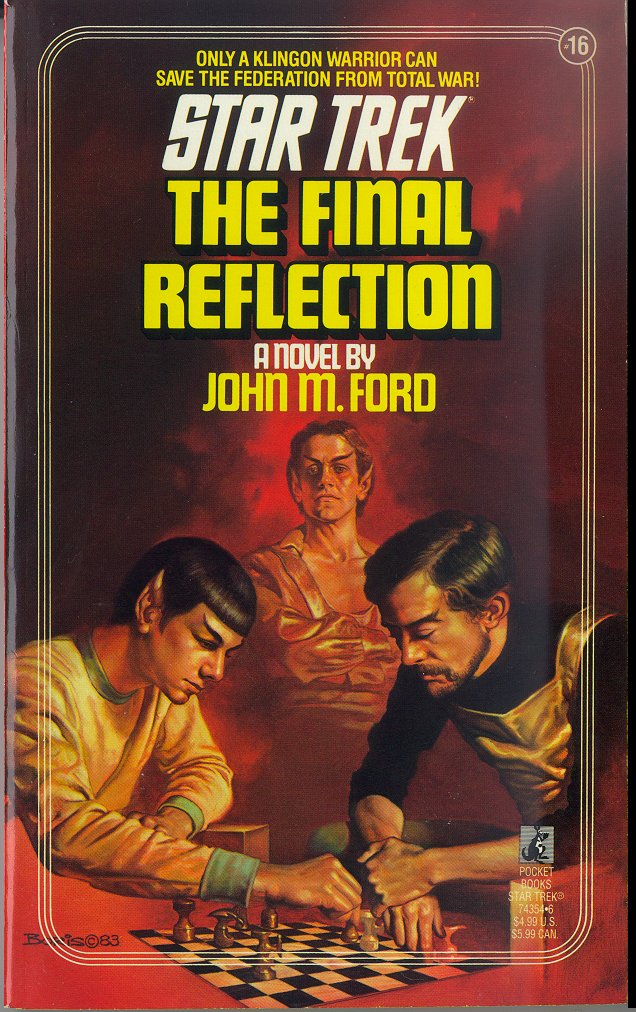 Klingons have gotten pretty sympathetic in the past couple of decades. In the original series, though, they were the most two-dimensional of goateed villains. The Final Reflection was the first story to give them a rich and detailed culture, to give them nuance while still letting them be worthy antagonists to the Federation. Ford’s Klingons keep slaves, merge chess with the Hunger Games for their national sport, and see conquest as a moral imperative. (That which does not grow dies, after all.) They also love their kids, and draw real and deep philosophy from their games of klin zha kinta.
Klingons have gotten pretty sympathetic in the past couple of decades. In the original series, though, they were the most two-dimensional of goateed villains. The Final Reflection was the first story to give them a rich and detailed culture, to give them nuance while still letting them be worthy antagonists to the Federation. Ford’s Klingons keep slaves, merge chess with the Hunger Games for their national sport, and see conquest as a moral imperative. (That which does not grow dies, after all.) They also love their kids, and draw real and deep philosophy from their games of klin zha kinta.
Reflection reveals the truth behind the mustache-twirling not only to 20th and 21st century readers, but to the 24th century as well. In the framing story Kirk is alarmed to come back from leave and find his crew passing around surreptitious copies, swearing in klingonaase. Krenn’s story is banned by the Federation, of course. Letting people see the monster’s side of the story is dangerous.
Fledgling, by Octavia Butler
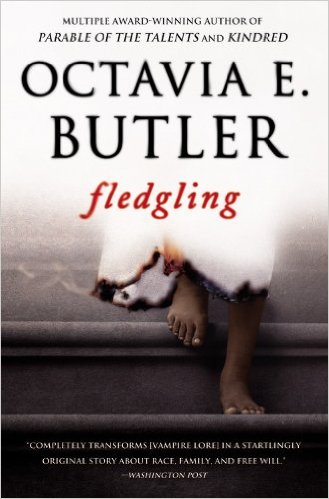 I’m a hard sell on vampires, and an almost impossible sell on amnesia stories. But I adore beyond words Butler’s final novel, the tale of a young woman who wakes up with no memory—and turns out not to be as young as she looks. Like most of Butler’s work, it dives deep into questions of power and consent. Shori has to drink blood to live, and can’t help forming an intimate and unequal bond with those she feeds from. In between trying to learn who stole her memory and why, she has to figure out how to have an ethical relationship with people inherently weaker than her—and whether it’s even possible.
I’m a hard sell on vampires, and an almost impossible sell on amnesia stories. But I adore beyond words Butler’s final novel, the tale of a young woman who wakes up with no memory—and turns out not to be as young as she looks. Like most of Butler’s work, it dives deep into questions of power and consent. Shori has to drink blood to live, and can’t help forming an intimate and unequal bond with those she feeds from. In between trying to learn who stole her memory and why, she has to figure out how to have an ethical relationship with people inherently weaker than her—and whether it’s even possible.
There were supposed to be more of these, damn it.
The Golem and the Jinni, by Helene Wecker
I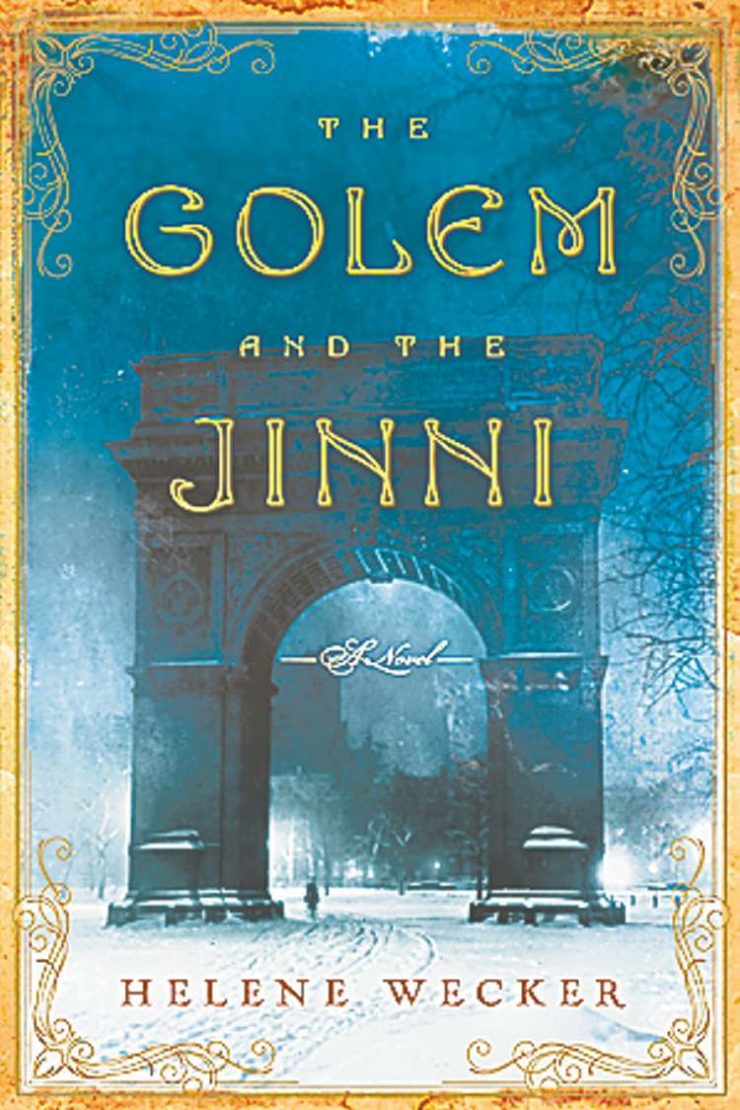 mmigrants come to the US and try to fit in—learn the language, get a job, find friends. Wecker’s protagonists are no different, except that they happen to be a fire elemental locked in human form by unknown magic, and a golem whose master died shortly after awakening her in the middle of the Atlantic. Ahmad is arrogant and impetuous, a monster because of his confident lack of concern with others’ needs. Chava is made to put others’ needs first, but still a monster because—as everyone knows—all golems eventually run mad and use their inhuman strength to rend and kill until they’re stopped.
mmigrants come to the US and try to fit in—learn the language, get a job, find friends. Wecker’s protagonists are no different, except that they happen to be a fire elemental locked in human form by unknown magic, and a golem whose master died shortly after awakening her in the middle of the Atlantic. Ahmad is arrogant and impetuous, a monster because of his confident lack of concern with others’ needs. Chava is made to put others’ needs first, but still a monster because—as everyone knows—all golems eventually run mad and use their inhuman strength to rend and kill until they’re stopped.
Together, they don’t fight crime (mostly), but they do help each other resolve the mysteries behind their respective creations. They compliment each others’ strengths and monstrous natures. Chava teaches Ahmad how to take care of people beyond himself, and Ahmad helps Chava learn to value herself. They give each other the thing Frankenstein’s monster never had, and together find a place in the world and a community where they can survive.
 Ruthanna Emrys’s neo-Lovecraftian stories “The Litany of Earth” and “Those Who Watch” are available on Tor.com, along with the distinctly non-Lovecraftian “Seven Commentaries on an Imperfect Land” and “The Deepest Rift.” Winter Tide, a novel continuing Aphra Marsh’s story from “Litany,” is available from Tor.com Publishing on April 4th. Ruthanna can frequently be found online on Twitter and her blog, and offline in a mysterious manor house with her large, chaotic household—mostly mammalian—outside Washington DC.
Ruthanna Emrys’s neo-Lovecraftian stories “The Litany of Earth” and “Those Who Watch” are available on Tor.com, along with the distinctly non-Lovecraftian “Seven Commentaries on an Imperfect Land” and “The Deepest Rift.” Winter Tide, a novel continuing Aphra Marsh’s story from “Litany,” is available from Tor.com Publishing on April 4th. Ruthanna can frequently be found online on Twitter and her blog, and offline in a mysterious manor house with her large, chaotic household—mostly mammalian—outside Washington DC.










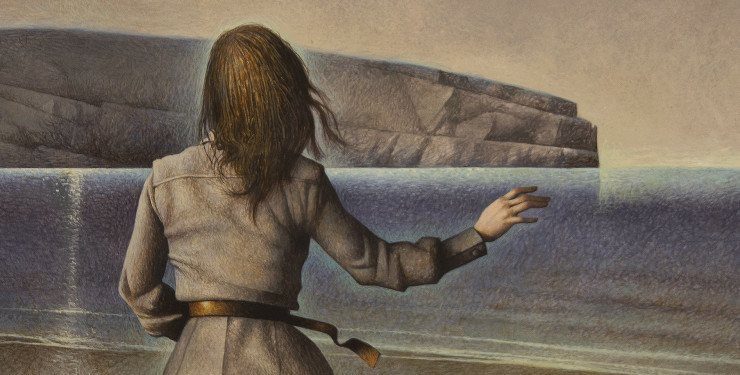
I read Frankenstein in college and felt so sad for him! I think it was also around the time I saw Lilo and Stitch and drew some fun parallels. But that was actually my first thought when I read the title of this post.
Grendel, by John Gardner.
Great list. It’s so rare that one of these lists is made up entirely of books I’ve actually read. God, I wish Octavia Butler were still around to see that her Parable series has actually come true. Also, can’t wait for more from Helene Wecker.
One thing though: Where is John Gardner’s Grendel? It was the first book I thought of when I saw the article heading.
Can’t wait for Winter Tide!
The Girl With All the Gifts, by M.R. Carey is a nice addition to this collection
John Gardner’s Grendel is definitely something that deserves a mention, and I’ll also throw a shout out to Joanne M Harris’ The Gospel of Loki, which cleverly reinterprets the Norse myths from his PoV.
Andre Norton’s Gryphon series stars Kerovan, who was born after his mother entered an uncanny pact and has cloven hooves and inhuman eyes. Norton takes the whole Dunwich thing and shakes it briskly inside out. By the end of the series, he’s a happily married community leader.
Well, Gregory Maguire has made a career out of retelling stories from the “wrong side”. And I know dark reimaginings are common (too common nowadays), but Wicked is a good read.
Um, Anne Rice’s Interview with the Vampire???
Thinkpieces invoke it as a warning against scientific hubris. In fact, it’s a fable about the importance of good parenting:
It’s very obviously a warning against scientific hubris, and humanity usurping the role of the gods. She didn’t subtitle it “The Modern Prometheus” because the monster had daddy issues.
Not that the bad parenting interpretation is wrong, but it’s pretty clearly not the stated intent of the book. Hell, in the same vein we could read Victor as god and the monster as all of humanity and interpret the book as a manifesto for atheism.
I have mixed feelings about the growing trend of telling stories from the monster’s perspective. Authors and readers should be willing to question the official designation of “monster” that often means nothing more than “you look different” or “you have something we want.” But there is a difference between questioning whether someone should be classified as a “monster” and letting a character’s interesting qualities conceal their despicable behavior.
The Final Reflection made Klingons people, rather than just generic baddies. Ford gave them their own culture and beliefs, and he wrote Klingons with personal relationships and feelings. He created a complicated and conflicted society…that was still awful. As the author mentions, they use orphans as pieces in Klingon chess games, enslave intelligent aliens, and cheerfully bombard defenseless worlds. Being three-dimensional, and sometimes sympathetic, doesn’t make them any less terrible.
The trend towards “honorable” Klingons is an error. This is a people that worships power and conquest, settles leadership struggles through assassination or stabbing each other with sharp metal sticks, and invades their neighbors anytime they think they can get away with. The fact that all of these things are acceptable and honorable behavior by Klingon standards just shows how messed-up Klingon standards are.
I, Strahd: Memoirs of a Vampire: The Ravenloft Covenant by PN Elrod
Fred Saberhagen’s Dracula series, but mostly the first book The Dracula Tapes which is a retelling of the novel from the Count’s point of view. Most of the books in the series maintain an edge where the reader is never quite sure if Dracula is “innocent,” or just trying to fool the reader by reinterpreting events when all the original participants are dead, or in fact still a monster but a different kind of monster than the one depicted in Stoker’s book.
Bujold’s Vorkosigan short story Labyrinth – Miles encounters a monster and has his expectations upended.
I’d also add Bujold’s Mirror Dance, where you get to see what’s really going on with the apparently villainous Mark.
Snuff, by Terry Pratchett. A re-imagining of Tolkien’s Orcs and goblins, in which the goblins are simultaneously admirable, pitiable, and to human eyes revolting. But not created-evil monsters.
A couple of classic short stories – The Griffin and the Minor Canon by Frank R. Stockton (“Do you know,” said the monster, “that I have had, and still have, a great liking for you?” “I am very glad to hear it,” said the Minor Canon, with his usual politeness. “I am not at all sure that you would be,” said the Griffin, “if you thoroughly understood the state of the case; but we will not consider that now. If some things were different, other things would be otherwise.”)
and “The Professor and the Patagonian Giant” by Tudor Jenks. (“Whenever I eat an animal, I diminish the stock of food which supports mankind, but whenever I eat a man, I diminish the number to be supported. … my course of action tends ultimately to the greater happiness of the race.” The professor is left without a leg to stand on… or anything else, after the giant has finished his meal.)
If we can include based-om-a-true-story books about humans who have in one way or another been considered as monstrous —
Hilary Mantel’s The Giant, O’Brien, in which the unfortunate sufferer from a glandular disorder, although treated as a subhuman freak, proves to be far more human than the physically normal but morally bankrupt surgeon who covets the giant’s body for dissection if he’d just go ahead and die.
Madison Smartt Bell’s Devil”s Dream, a fictionalized account of Nathan Bedford Forrest, slave-dealer, Confederate general, probable war criminal, and Klan founder.
Kate Manning’s My Notorious Life, based on the life of a 19th-century woman once known as “The Wickedest Woman in New York.” But who or what were the real monsters here?
Thank you for including The Golem and the Jinni on this list. It’s such an emotional read, and it doesn’t get the love in genre circles it so rightfully deserves.
Jacqueline Carey’s Sundering duology was fantastic. “Banewreaker” and “Godslayer”. Wish she would write a lot more in that re-constructed tolkienesque world. These books should be much more widely read.
From wiki: “Carey presents a similar story as a tragedy told from the “dark” side’s perspective. Though one side can be considered light, consisting of Elf-like creatures, Men, and Dwarves, and the other dark, with an army of Trolls, neither can be considered solely “good” or “evil”.”
@9: I think Victor tried to present his story as a tale of hubris (it’s been a long time since I read it so I can’t swear to accuracy). But considering his actions, I don’t take him as a good judge of his own story. And I think it’s too simple a reading, considering that Shelley chose to make a story about a created human rather than some more impersonal artificial monster or plague. The tragic outcome came as much from Victor’s refusal of responsibility to his creation as to his making it in the first place.
Oh and a big of a twist on the theme – Eve Forward’s wonderful inversion of D&D in Villains By Necessity, where the last few remaining Dark forces band together to try and overturn a victory by the forces of Good that threatens to destroy the world.
@18 Mayhew
I loved that book in 9th grade, but I have to say that it makes absolutely no sense. Forward’s narrative has “Good” characters who aren’t actually good in any sense of the word, while most of her “Evil” characters are, at worst, seriously delusional. I also find the idea of “balance” ridiculous; there is no magical middle point where the world needs to stop for its own good. The world can, and should, keep becoming a better place.
The Dragonlance books played with the same concept. Instead of having too much Good destroy the world, their justification was that Good would become corrupt without Evil to oppose. I was also a huge fan of Dragonlance, but I was a skeptic about that kind of thinking even as a child. There’s plenty of Evil within our own society to oppose without the need to create a whole Evil faction so that the Good Guys would always have someone to fight.
@19 ” I also find the idea of “balance” ridiculous; there is no magical middle point where the world needs to stop for its own good. The world can, and should, keep becoming a better place. ” – aaah, yes, I agree with this. Which is why I occasionally have some problems with a few of my otherwise favorite works (such as Wheel of Time or even Star Wars depending on how you interpret the ‘balance of the Force’) that tend to go in this direction. But I don’t agree with the idea that evil is necessary for good so… :)
I also agree with you in general about the trend to repaint villains. Sometimes a complex villain is a really good thing, or seeing a new perspective but sometimes villains are villains and it’s okay to say that. I have the same mixed feelings (for example, Wicked does not appeal to me at all, and Maleficent kind of does two things – in addition to following this trend, it kind of de fangs one of their best characters because she doesn’t even get to turn into a freaking dragon SO EFF THAT).
Just need to make this observation: “the family’s diseased patriarch” in Tooth and Claw was not diseased.
He was deceased. Had he been diseased, it would hardly have been healthy to eat him.
@21 – Corrected, thank you!
A Night in the Lonesome October by Zelazny has a few monsters in it and is told from an interesting perspective.
I adored this trope above most others…before I knew that it was a trope. Spent my childhood and most of my teen years thinking I was almost the only person who cared about “monsters” or their side of the story, as one could believe in the time before internet fandoms. Any story that revealed otherwise seemed a rare treasure. I’ve since had the good luck to discover many, many such stories (a lot of them via this website) and every not-so-rare jewel is a jewel nonetheless. We share the burdens and pleasures of telling these stories.
But I’ve still encountered few other Wheel of Time fans who envision stories from Shadowspawn perspectives. So I’m still weird. :-)
@6: The Key of the Keplian, the only Andre Norton book I’ve read, also uses this trope. Its monster horses are reasonably believed by humans to be evil — except by the outsider who innocently saves and befriends a mare and foal, learns of their species’ lives and perspectives (as do we) and eventually discovers that they were “created to serve light, not darkness, and ride with humans.” The last revelation is not what all monster stories aim for, but I loved it here.
@14: I loved what Snuff did with goblins. And Unseen Academicals starring the most adorkable orc in the multiverse.
Concerning Klingons and The Final Reflection:
“In the original series, though, they were the most two-dimensional of goateed villains.” – This isn’t entirely true. They already became more than that in the third season episode “Day of the Dove”.
“Krenn’s story is banned by the Federation, of course. Letting people see the monster’s side of the story is dangerous.” – And this doesn’t sound like the Federation I know. Wouldn’t any halfway enlightened society encourage people to learn more about their political adversaries?
I’m reluctant to mention it because I’ve mentioned it way too often, but Peter Watt’s The Things… oh wow. PW wrote the monster’s-eye movie retelling I’d always longed for somebody to write.
And here I sit, a dashed unhappy chappy, wondering how nobody’s remembered The House of Asterion by Jorge Luis Borges, and likewise, The Immortal …
What could be more in line with your thesis than Asterion, who does admit the “Not for nothing was my mother a queen; I cannot mix with commoners, even if my modesty should wish it.” and later asks “What will my redeemer be like, I womder. Wil he be bull or man? Could he possibly be a bull with the face of a man? Or will he be like me?”
I leave The Immortal to your perusal at your leisure …
@19
Oh I agree, the “Good” side is definitely banal evil. But that’s the thing about D&D – Good and Evil are real tangible concepts, occasionally even physical beings, and total racial alignment is a thing. It all falls apart completely once you start taking a close look at it. A lich is Evil by definition, not by actions. Why can’t a lich quietly dwell in a cave collecting butterflies instead of wanting to rule a world?
In terms of Balance, I always liked Modesitt’s approach, where Chaos and Order are the two fundamental forces of the world and *always* balance out, though local concentrations can vary significantly in terms of how which is what gives us our plot tensions. But that’s a diversion from the topic..
Charlie Stross’s books The Rhesus Chart and The Nightmare Stacks, both have vampires amongst their protagonists, and part of the plot is how a government department can legitimately procure blood for it’s employees, when consumption of the blood will kill the donor. The main protagonist, Bob Howard, is now not entirely human as well.
The Bartimaeus Trilogy is another excellent series that tells the story from the monster’s point of view.
Monster Hunter Alpha and Monster Hunter Nemesis
@9: Nonsense. Frankenstein as an anti-science screed is the kind of tedious, typical interpretation that can be easily dismissed once you start digging a little bit. For starters, here is one of the most sympathetic characters in the novel talking about science:
“The ancient teachers of this science,” said he, “promised impossibilities and performed nothing. The modern masters promise very little; they know that metals cannot be transmuted and that the elixir of life is a chimera but these philosophers, whose hands seem only made to dabble in dirt, and their eyes to pore over the microscope or crucible, have indeed performed miracles. They penetrate into the recesses of nature and show how she works in her hiding-places. They ascend into the heavens; they have discovered how the blood circulates, and the nature of the air we breathe. They have acquired new and almost unlimited powers; they can command the thunders of heaven, mimic the earthquake, and even mock the invisible world with its own shadows.”
Personally I find this one of the most beautiful paeans to scientific progress in the history of English literature, something hardly fitting Frankenstein’s reputation as the paradigmatic anti-science novel. Which is quite fitting, since both Mary and Percy Shelley were fascinated by modern scientific investigations, specially in electricity. And while the theme of hubris is repeteadly asserted, it is not asserted less than the theme of child abandonment. During the long monologue of the monster, it is quite clear that what the monster is actually reproaching Victor is that not only he created him, but that he abandoned him in a cold, cruel world, and refused him his love. And if that weren’t telling enough, we have another subtle, yet significant, clue in the dedication. The novel was dedicated to William Godwin, in other words… the father of Mary Shelley. That may seem innoucous, but any biography of Shelley will tell you that she had a complicated relationship with her father, and that she most probably suffered of what can be described as a neglected childhood: by all accounts, after his marriage with his second wife, he systematically ignored Mary (daughter of his first wife, the philosopher Mary Wollstonecraft, died during childbirth) until her adulthood, although encouraged her in her educational endeavours. This is more of a personal theory than anything else, but it is hardly far-fetched to think that he blamed his daughter for her mother’s death, with whom by every account Godwin was deeply, profoundly in love with. Considering all this, I don’t think what Ms. Emrys says is wrong in any way.
How about…
Goblin Quest [and following] by Jim C Hines
and
Orcs! by Stan Nicholls?